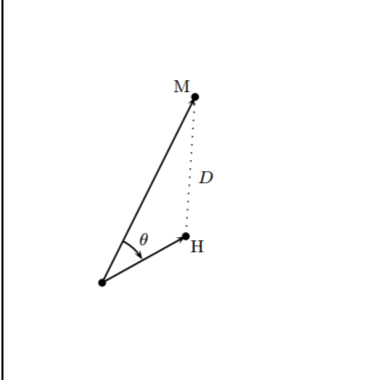We know that the hour hand completes its path around the clock at:
(1"rev")/(12h)=(2π"rad")/(12h)=(π/6)"rad"/h
And minute hand travels in :
(1"rev")/(1h)=(2π"rad")/(1h)=(2π"rad")/h
Hence,
theta keeps changing between them at the rate of:
color(blue)((d theta)/(dt)=(π/6-2π)=-11/6π"rad"/h)
Now,
At 3:00
Hour hand is at 3 and minute hand is at 12, which is 1/4th of revolution.
Thus, at 3 o' clock theta=2π×1/4=π/2
What we require is (dD)/(dt) when theta=π/2.
color(red)"By Pythagoras law",
D^2=15^2 + 12^2 =369
D=sqrt(369)≈19.2mm
color(red)"By law of cosines",
D^2=(12)^2+(15)^2-2(12)(15)costheta
=>D^2=369-360costheta
Differentiating wrt time,
d/(dt)(D^2)=d/(dt)(369)-d/(dt)(360costheta)
=>2D(dD)/(dt)=0-360(-sinthetacolor(blue)((d theta)/(dt)))
=360sinthetacolor(blue)((d theta)/(dt))
=>(dD)/(dt)=(180sintheta)/Dcolor(blue)((d theta)/(dt))
Finally subbing in,
color(red)(((dD)/(dt))_(theta=π/2))=(180sin(π/2))/(19.2)color(blue)((d theta)/(dt))
=(cancel((180))^(30))/(19.2)×(-11π)/cancel6
color(red)(≈-17.1875 " mm/h "≈-0.00477 " mm/s")
Hope this helps. :)


